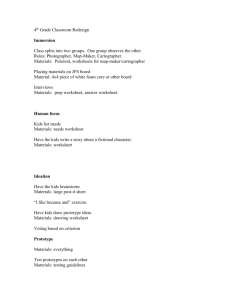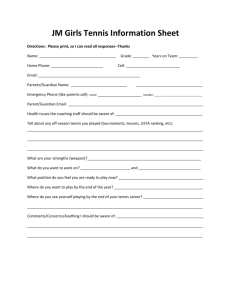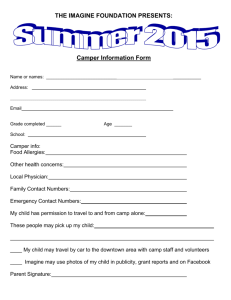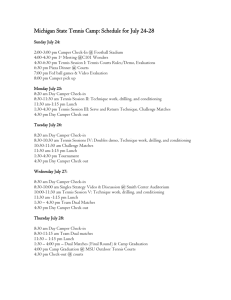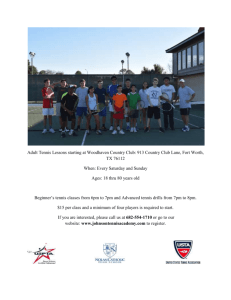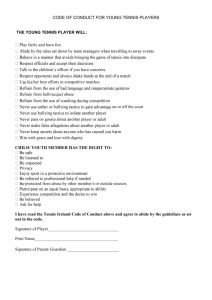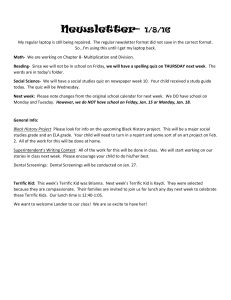Communication Worksheet
advertisement
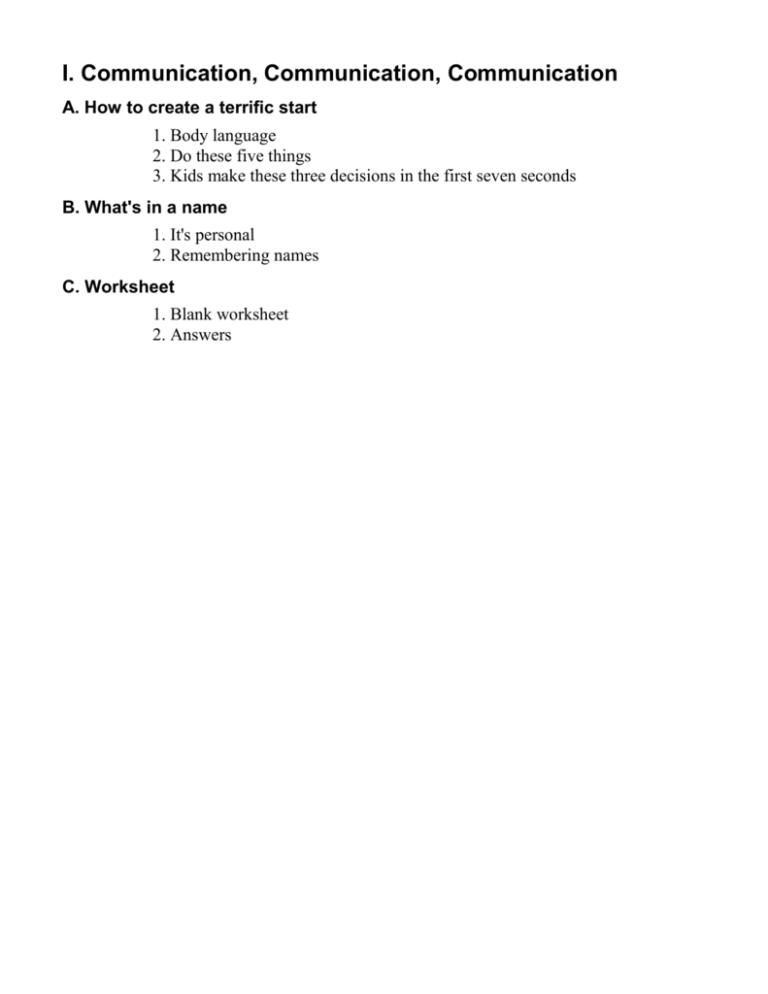
I. Communication, Communication, Communication A. How to create a terrific start 1. Body language 2. Do these five things 3. Kids make these three decisions in the first seven seconds B. What's in a name 1. It's personal 2. Remembering names C. Worksheet 1. Blank worksheet 2. Answers I. Communication, Communication, Communication A. How to Create a Terrific Start As most of you know a big part of communication is non-verbal. Your attitude, enthusiasm and smiles are things that you are in control of and can make a huge difference when meeting and interacting with your students. Try to remember these things when you meet someone for the first time; smile and aim your smile at that person, introduce yourself first and be proud of who you are, what you do and where you work, shake their hand and start a conversation. Here's an example of a terrific start between a tennis counselor meeting a camper for the first time. TC: (smiling at the camper) Hello, my name is Kelly and this is my second year at Camp Maple. (Shaking hands with the camper) What's your name? Camper: Johnny TC: Well Johnny we're going to have a lot of fun this summer playing tennis, what do you like best about tennis? Kids are surprisingly perceptive and know very quickly whether they like you, if you care about them and if you are listening to them. This can help you in many ways because you truly want to develop a friendship. So develop an interest in your students and become involved with them because it will provide many returns on and off the tennis court. B. What's in a name Using a student's name is one of the highest forms of personalized service. Dale Carnegie says, "The sweetest sound in any language is a person's own name." If you do use nicknames make sure they are positive and the student is comfortable with the name. It's probably better to be overly respectful especially with adults, give them the opportunity to establish the level of familiarity that makes them comfortable. You must read your students and be prepared to adjust your communication style. It takes time and a consistent effort to develop the use of names but it's an effort that your students will greatly appreciate. It's one of the first steps in building a rewarding relationship with your student. To help you remember names here are some suggestions: Preparation, try to look at the names before the class starts. For example, if you have a group of eight kids in an after school clinic review the names before the class starts. Repetition, use the names as often as possible. If you are doing a two-ball across as a warm up drill say that person's name as often as possible for example; "Okay Mike show me an early racket preparation on this first ball. Yeah that's good Mike. All right Mike swing a little slower on this second shot. Way to go Mike!" Association, you can associate a person with another person to help you remember their name. For example, in a class of eight ladies you have a lefty whose name is Mary and you can associate her with Martina (another lefty tennis player) so Mary becomes Mary- Martina. Look, you can remember a name by their physical attributes. For example, you may have a very tall junior in your class whose name is Tommy. You can remember him by "Tall Tommy". Ask, if you do forget ask them or another classmate their name. C. Worksheet - Communication Do these five things for a terrific start: 1. 2. 3. 4. 5. Kids make these three decisions in the first seven seconds: 1. 2. 3. What Does Dale Carnegie say about using names? It takes these two things to develop the use of names: 1. 2. List 5 things you can do to help remember names: 1. 2. 3. 4. 5. C. Worksheet – Communication (answers) Do these five things for a terrific start: 1. smile 2. aim your smile 3. introduce yourself first - be proud of who you are, what you do, where you work 4. shake hands and mean it 5. start some conversation Kids make these three decisions in the first seven seconds: 1.do I like you 2.do you care about me 3.are you listening What Does Dale Carnegie say about using names? The sweetest sound in any language is a person's own name It takes these two things to develop the use of names: 1. Time 2. Consistent effort List 5 things you can do to help remember names: 1. Preparation 2. Repetition 3. Association 4. Physical attributes 5. Ask
